As we celebrate our 25th anniversary year, we're taking a long look back over the last quarter century of cinema. We already looked at the greatest opening scenes, greatest romantic gestures, greatest battles and game-changing moments, but this month we look at the best moneyshots, the bravura moments that left both audiences and rival directors open-mouthed in awe...
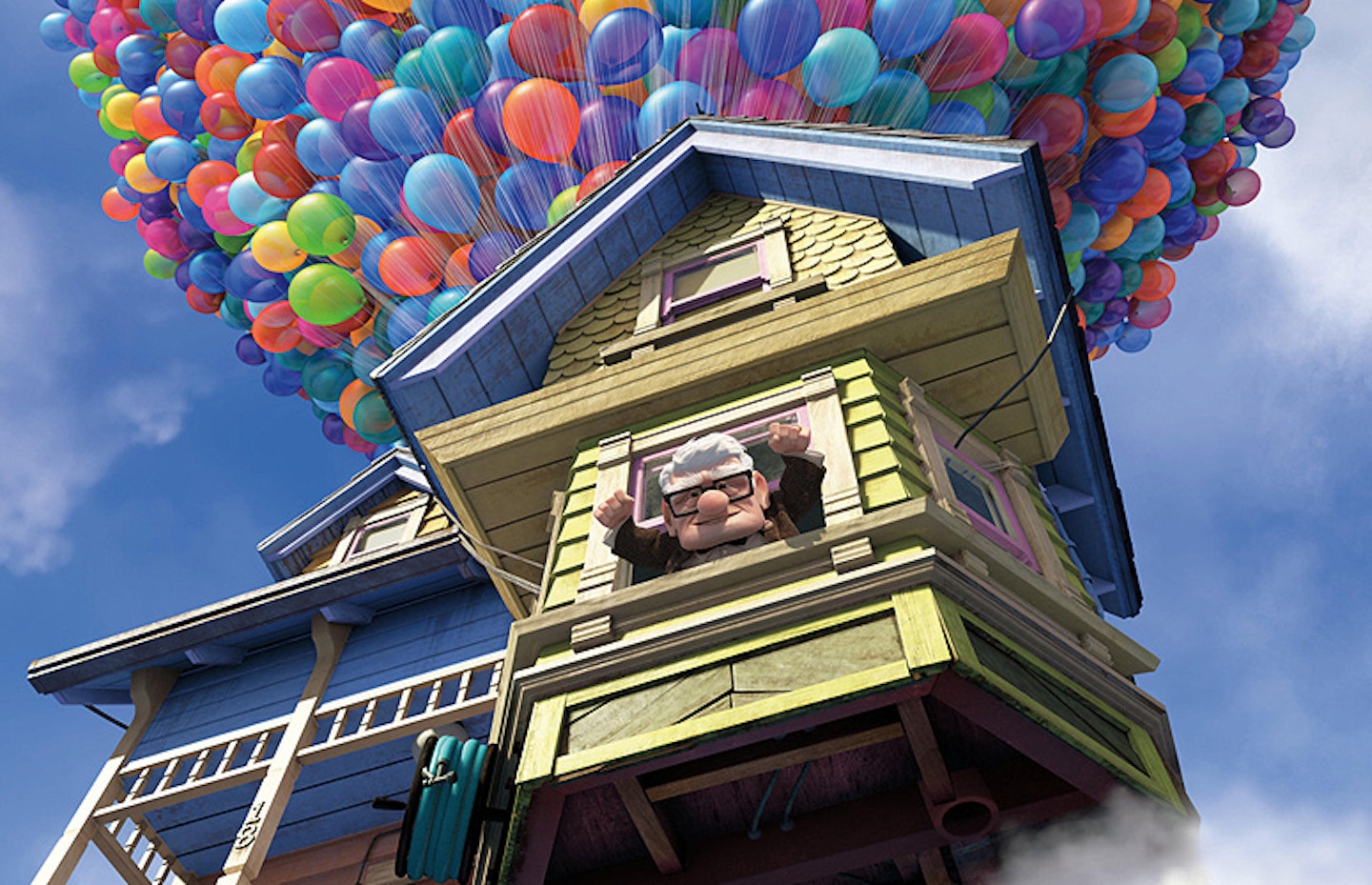
25 THE HOUSE LIFTS OFF (UP, 2009)
Up famously crams more emotion into its childhood-to-grave opening ten-minute romance than most movies manage in 95, but for pure Pixar wonder you can’t surpass the triumphant moment when prune-faced grump Carl Fredricksen looses the balloons. They gather and pull and the house, literally, goes up, as Michael Giacchino’s sublime score drifts in. “So long, boys!”
24 THE TENTACLE PERSPECTIVE (SPIDER-MAN 2, 2004)
Few filmmakers have so successfully transitioned from fanboy amateurs to studio behemoths as Sam Raimi, and retained the spirit that made him successful in the first place. The brutal awakening of Doc Ock is the spiritual sequel to the tree-rape sequence of Evil Dead, and the POV shot from the tentacles as they terrorise surgeons is its director encapsulated: scary, fresh and OTT.
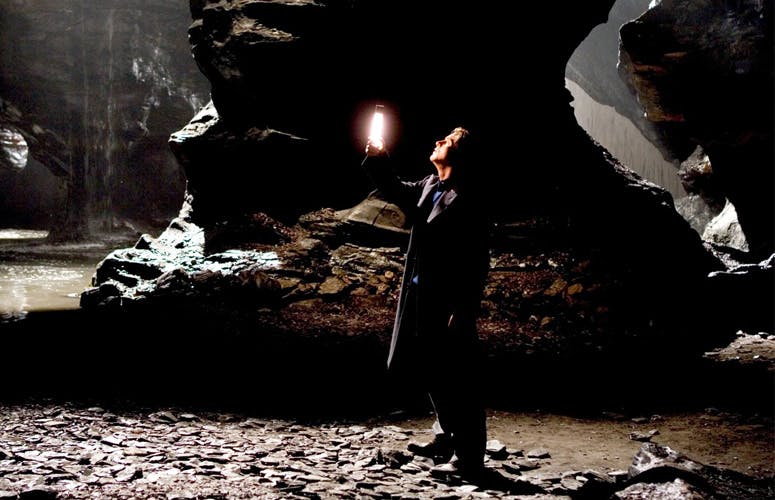%2023%20BRUCE%20IN%20THE%20BAT%20COLONY%20(BATMAN%20BEGINS,%202005?auto=format&w=1440&q=80)
It may not be regarded as the best of the trilogy, but Christopher Nolan’s first foray into Gotham has its admirable, sinewy purity summed up when Christian Bale’s Bruce Wayne discovers what will become the Batcave. He hears their squeal first, then the bats flap in and floor him, before he rises to stand amid the symbol of his childhood fear. It’s a shot of spectacle, but more substantial because it illuminates character.
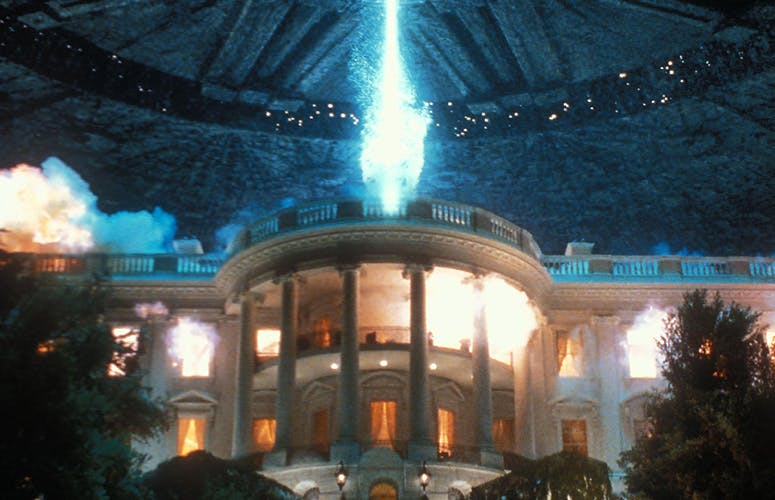%2022%20WHITE%20HOUSE%20OBLITERATION%20(INDEPENDENCE%20DAY,%201996?auto=format&w=1440&q=80)
Roland Emmerich never met a mise-en-scène he didn’t want to blow the fuck up, but in a career dedicated to destroying the world’s wonders, there’s nothing to equal the wow-factor of aliens blue-beam-blitzing the White House. It’s hard to recall its impact. After all, surely the good guys would save the day? Nope. As Jeff Goldblum says, “Time’s up!”
21 REMOTE CONTROL VIOLENCE (FUNNY GAMES, 1997)
Michael Haneke is synonymous with austerity, art-house and challenging filmmaking, but he also has a wicked sense of humour. During a brutal home invasion, one of the victims shoots her assailant... only for his friend to grab the remote control and rewind the action. It’s cheeky, shocking and hammers home his point about screen violence. It’s his signature scene: clever, funny and a bit irritating.
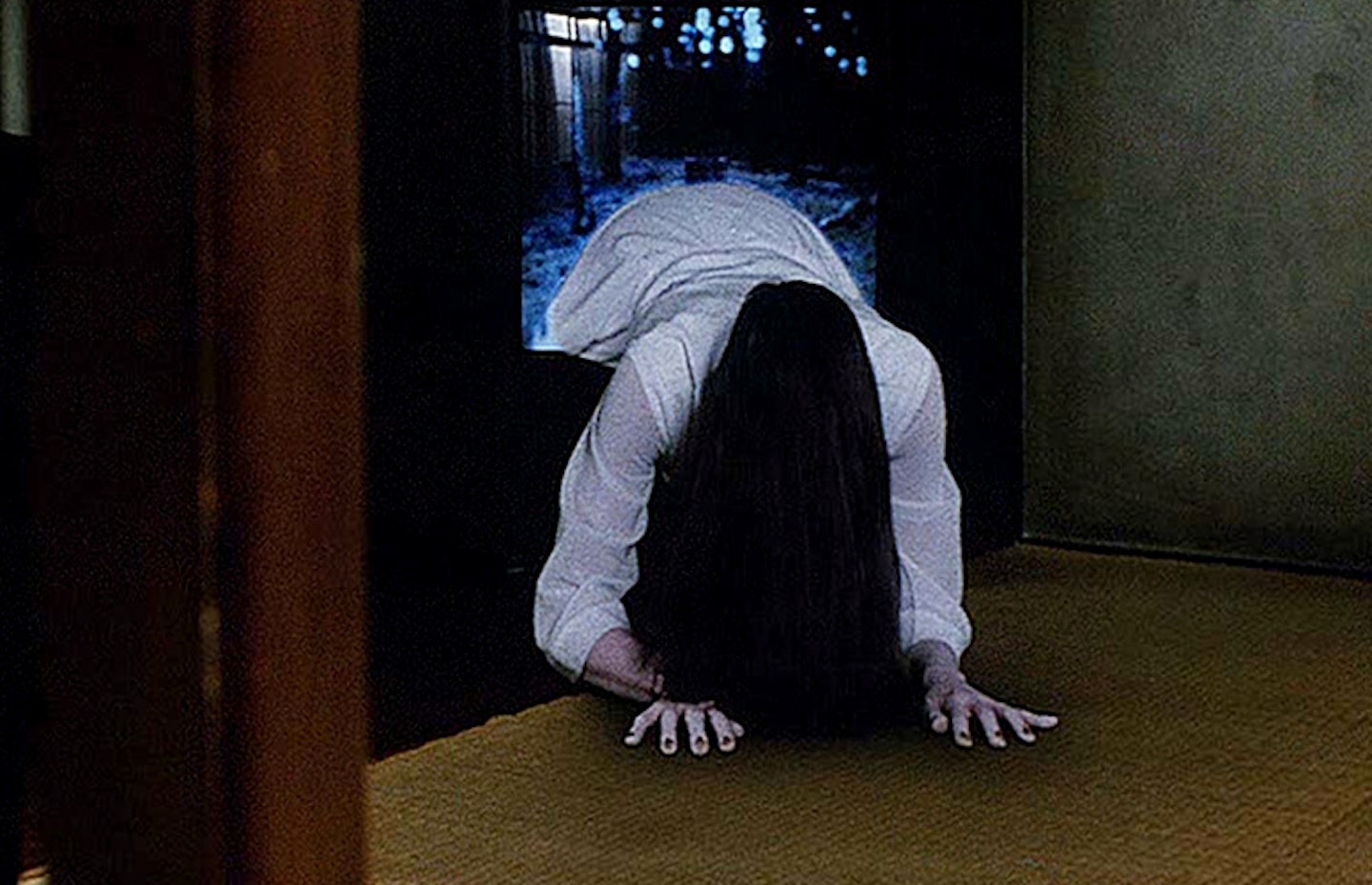
20 THE GIRL IN THE TV (RINGU, 1998)
Cynical attempts to design horror icons invariably stutter, with the best unexpected and unpredictable. For who could have known that a lank-haired, white-shrouded figure would become the postergirl for modern horror? With her disjointed but unstoppable gait, Sadako is quietly terrifying — her steady move out of the telly towards brick-shitting Wolverine star Hiroyuki Sanada fuelling infinite nightmares.
19 TRUMAN SLEEPING (THE TRUMAN SHOW, 1998)
A scarily prophetic picture teeming with stand-out shots, but the nexus of its style and substance is the moment where pseudo-god Christof (Ed Harris) watches his screen son sleep on a giant monitor and tenderly strokes his face — little realising Truman (Jim Carrey) is already plotting his escape from reality (TV). It perfectly captures the theme of the film and so much of Peter Weir’s work: connection.
18 THE STADIUM SWOOP (THE SECRET IN THEIR EYES, 2009)
The camera hovers high over a football stadium, swoops over the pitch, into a manhunt in the crowd, into a chase through the bowels of the stadium, a jump from a wall, a pitch invasion and an arrest... without a single noticeable edit. Created with a combination of choreography and extensive visual effects, it’s a stunning moment that alone might have won this the Best Foreign Language Film Oscar.
17 THE ENTIRE FILM (RUSSIAN ARK, 2002)
It’s perhaps the most expensive shot of all time — and certainly the most ostentatious — in that it is, we’ll say it again, the whole film. Alexander Sokurov’s elegant exploration of Russian history, taking us around the State Hermitage Museum, holds the world record for its continuous 96-minute take. Whether you are transported or befuddled by the results, you have to be impressed.
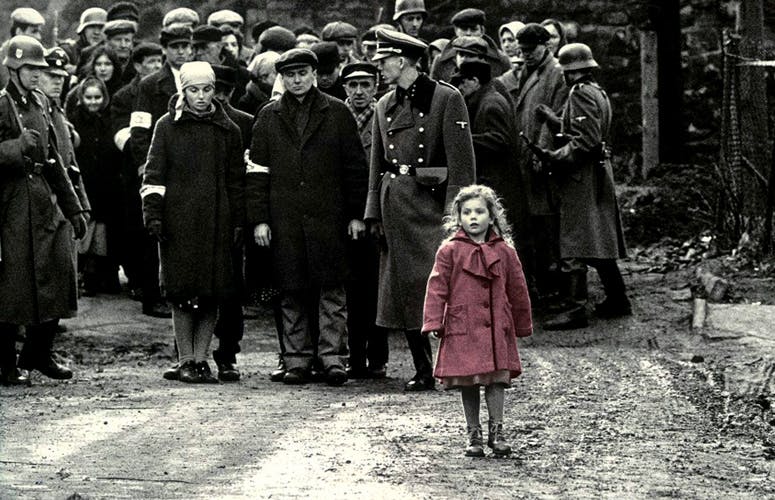%2016%20GIRL%20IN%20RED%20(SCHINDLER%E2%80%99S%20LIST,%201993?auto=format&w=1440&q=80)
Steven Spielberg’s bleak, black-and-white look at the Holocaust has a notable splash of colour: a girl in red walking through the dissolution of the Kraków ghetto and hiding in a house. It seems like it could be a bit of cheap relief from the genocide, until Schindler (Liam Neeson) later sees her coat on a wagon of bodies. It’s bold and shocking because it’s so cruel. Just as it should be.
15 BOMB’S-EYE VIEW (PEARL HARBOR, 2001)
Michael Bay lacks critical kudos — not least because he shoots women like they’re cars and cars like they’re women — and Pearl Harbor is seen as his biggest, if you’ll excuse us, bomb (it actually made a lot of money). But the attack on Hawaii is stunningly realised, with the POV drop shot the apex of both technique and questionable taste: pure Bay.
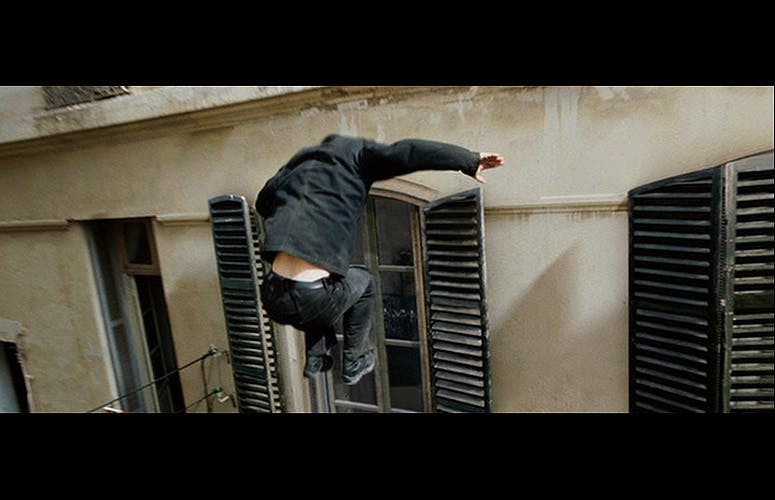%2014%20THE%20WINDOW%20JUMP%20(THE%20BOURNE%20ULTIMATUM,%202007?auto=format&w=1440&q=80)
If there’s one shot that sums up the Bourne series’ inventive spirit, it’s the hero’s leap from building to building through a closed window — followed so closely by the camera it seems impossible. How they did it is a tribute to the aesthetic of director Paul Greengrass and the ingenuity of second-unit action master Dan Bradley: he gave the camera to a stuntman, who filmed as he fell...
13 GRAND CENTRAL STATION WALTZ (THE FISHER KING, 1991)
Because it’s a moment of grace and wonder: as Robin Williams’ down-and-out watches his beloved Amanda Plummer wander through New York’s iconic thoroughfare, he sees crowded commuters gliding into dance. It almost didn’t happen: director Terry Gilliam imagined it but was hesitant about tampering with Richard LaGravenese’s screenplay, while they had only six hours during the night to shoot it, and none of the extras could dance. No wonder the director regards it “as good as anything I’ve done. Being my only really contemporary film, that’s an amazing way of expressing what fantasy can be.”
12 COFFEE-POT SHOT (PANIC ROOM, 2002)
It was a nightmare shoot and is perhaps his most underrated movie, but David Fincher delivers what may remain his most striking moment as the camera pulls away from Jodie Foster in bed, slips between the brownstone’s banisters, down two floors to the front room, shows the arrival of the burglars outside, drifts through the kitchen — and the coffeepot handle — out back and then up to where they eventually break in. It’s arguably ostentatious but serves a purpose: superbly establishing geography and building tension.
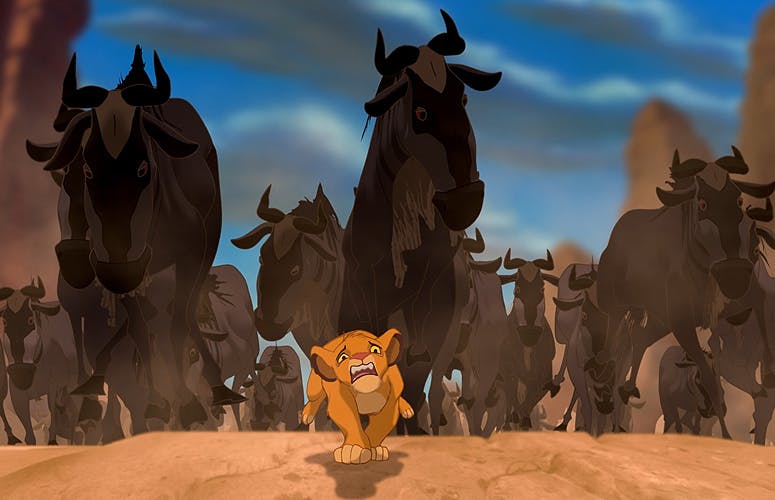%2011%20THE%20STAMPEDE%20(THE%20LION%20KING,%201994?auto=format&w=1440&q=80)
Directors Rob Minkoff and Roger Allers took Disney Animation to its second golden-age peak with The Lion King, a reminder of the studio’s strength in an era now overshadowed by Pixar et al. The film’s wildebeest stampede, after all, is one of the most cinematic animation sequences ever drawn, particularly in its opening Jaws-like dolly-zoom as the horror hits Simba. Notably, in a largely hand-drawn film, this was partly computer-animated.
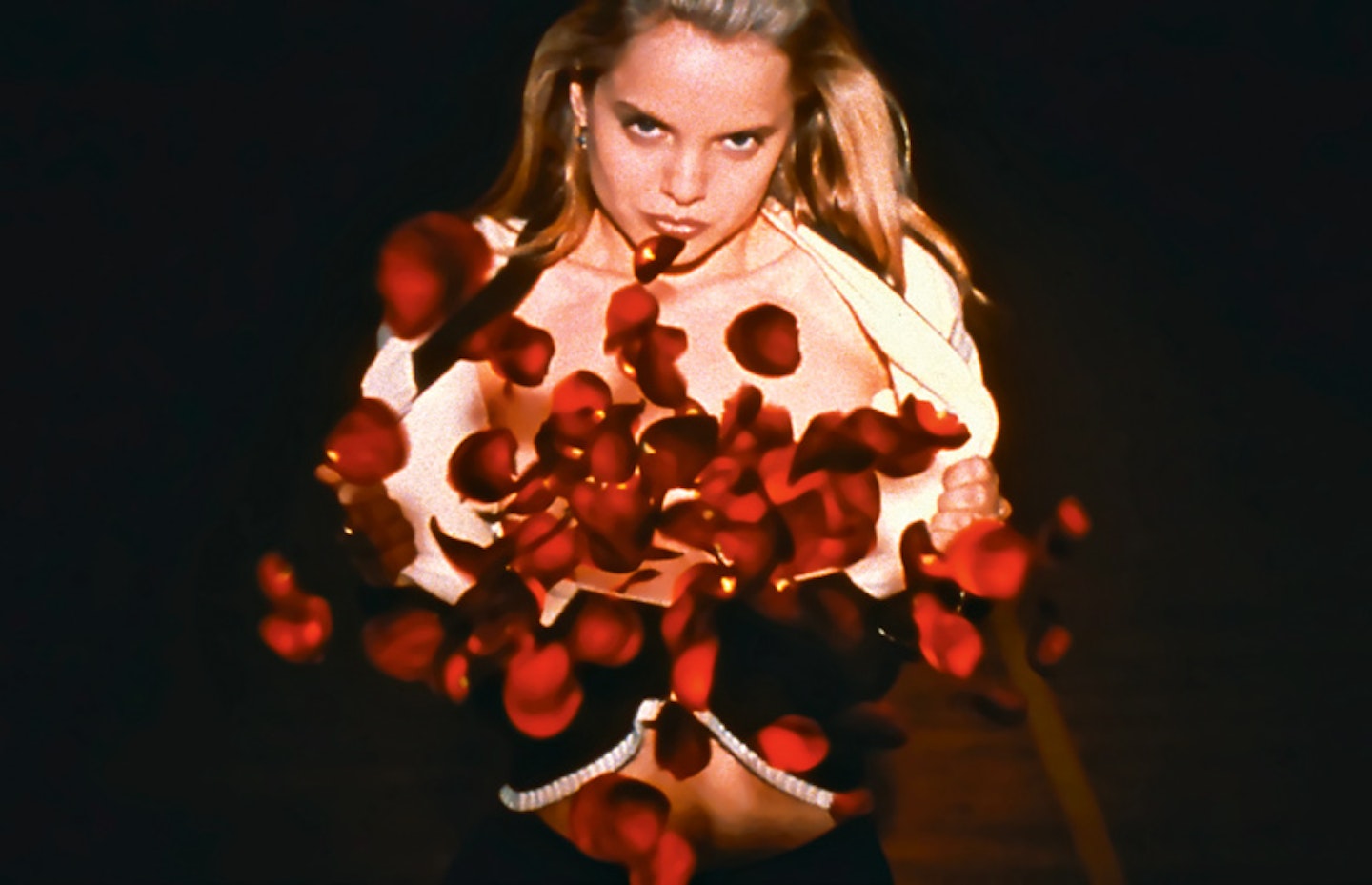
10 THE ROSE DANCE (AMERICAN BEAUTY, 1999)
Hard to believe this was Sam Mendes’ debut. Watching his teen lust-object Mena Suvari cheerlead, Kevin Spacey’s desperate suburbanite imagines her stripping — but when she opens her top it’s to reveal floating rose petals. He thinks he craves her; really he craves beauty.
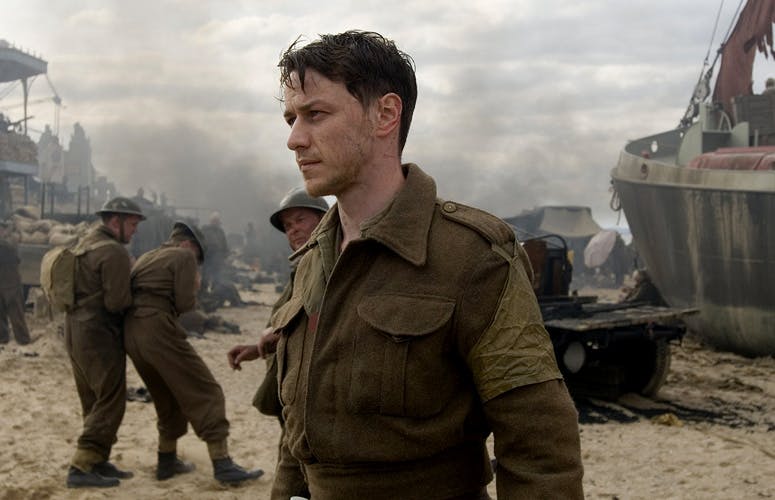%209%20DUNKIRK%20(ATONEMENT,%202007?auto=format&w=1440&q=80)
Apparently first conceived for budgetary reasons (so they could save on extras), rather than simply to show off, Joe Wright’s heartbreaking one-take Steadicam shot of the British army’s notorious wartime evacuation is a masterpiece of choreography and concentration, segueing from military argument to shooting horses, soldiers staring into space and others singing a hymn, and at its heart a brilliantly fractured James McAvoy as Robbie Turner. Still stunning.
8 ESTATE FLYBY (LA HAINE, 1995)
A curious hiatus from the action in Mathieu Kassovitz’s blistering look at youth disaffection, yet it’s a necessary gracenote amid the anger, as real-life DJ Cut Killer mixes Edith Piaf with KRS-One and the camera (mounted on a remote-controlled mini-helicopter) drifts from his window, out over the sink estate. Simply a beautiful shot, but one that helps makes the story feel recognisably universal — this could be your town.
7 THAT FLASH (BASIC INSTINCT, 1992)
This is pure schoolboy fantasy, but the interrogation of Sharon Stone’s femme fatale fizzes with sexual energy as she dominates a room of five men, torments Michael Douglas and then, well, uncrosses her leg to reveal things are a bit breezy down below. No-one does ambitious trash quite like Paul Verhoeven.
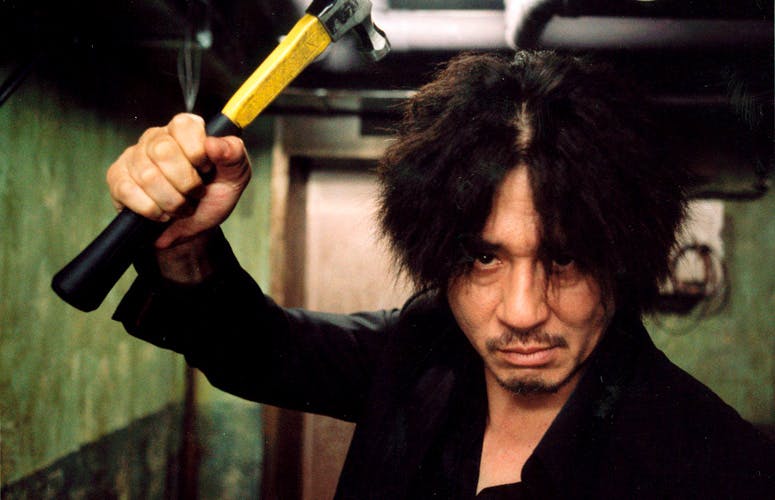%206%20CORRIDOR%20CARNAGE%20(OLDBOY%202003?auto=format&w=1440&q=80)
It apparently took 17 takes over three days to mount this astonishing sequence — a determination justified given what it represents for the character, as Oh Dae-su (Choi Min-sik) brings the pain to a corridor full of thugs in one long, cut-free — yet cut-full — shot. Watch it and wince.
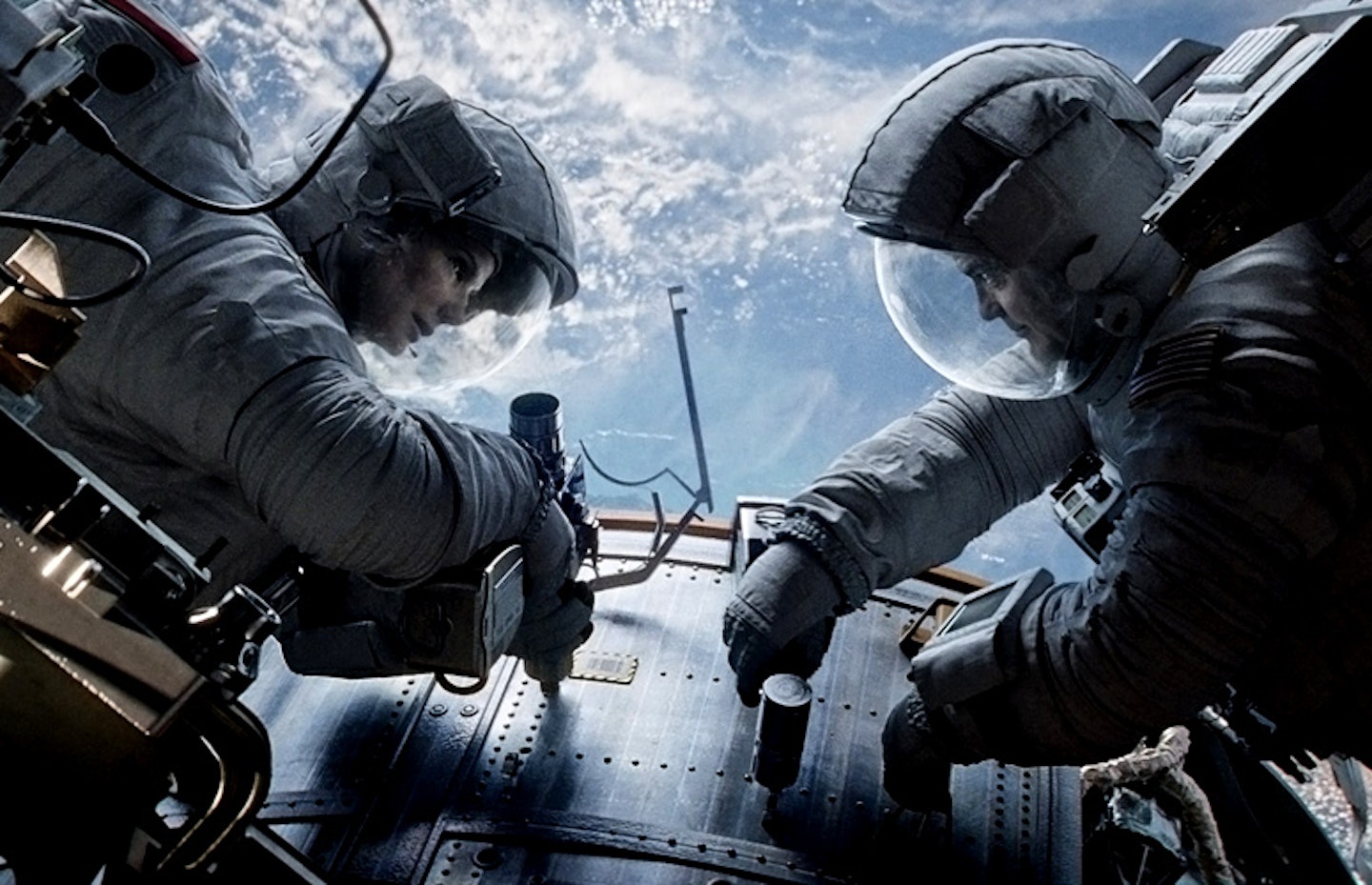
5 THE OPENING (GRAVITY, 2013)
Alfonso Cuarón and his DP Emmanuel Lubezki wanted Gravity to look like “a space documentary” rather than sci-fi, and crucial to the immersion is the opening sequence, as we meet Sandra Bullock and George Clooney’s astronauts, enjoy the beauty of Earth from on high and then float with them through the debris and disaster that befalls them, until they are stranded. It is an astonishing 13 minutes, presented as a single shot. Of course, there were cuts, but in space, no-one can see the seams.
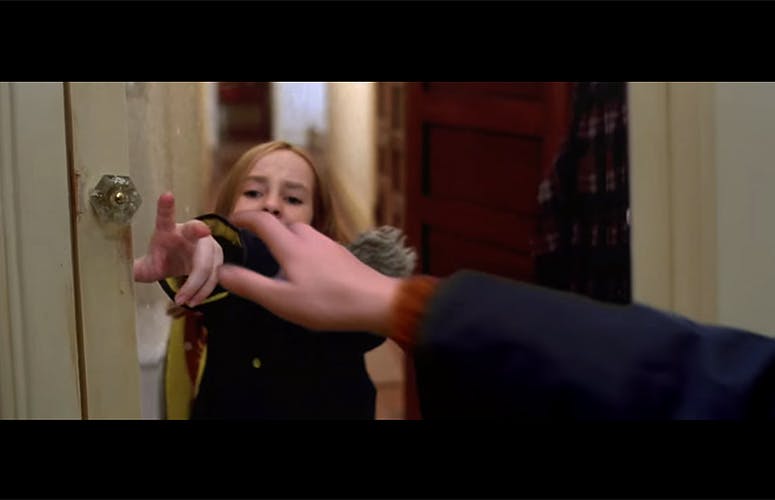%204%20MIRROR%20RUSH%20(CONTACT,%201997?auto=format&w=1440&q=80)
Robert Zemeckis has always pushed the FX envelope, but it’s this moment in Contact that, if you stop to notice or appreciate it, truly astounds. Jena Malone slo-mo sprints down a corridor to get her dying father’s medicine, only for us to realise that we are watching her in a mirror, the camera impossibly invisible. It’s disconcerting, appropriate to the moment and technically virtuosic.
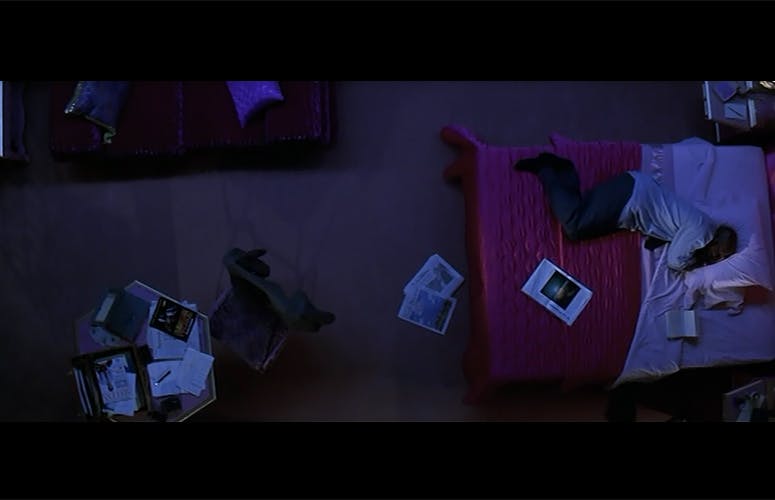%203%20THE%20HOTEL%20CEILING%20GLIDE%20(SNAKE%20EYES,%201998?auto=format&w=1440&q=80)
Because it’s arch-stylist Brian De Palma at his cheekiest, smartest and showiest. In a film packed with long-take POV shots it has huge impact, taking a gentle, straightdown God’s-eye view over a series of adjacent Atlantic City hotel rooms before ending up at femme fatale Carla Gugino scrubbing blood in an ensuite. The movie itself is pure naff, but this shot is so graceful, Spielberg homaged it later in Minority Report.
%202%20VIEW%20FROM%20THE%20PROPELLER%20(TITANIC,%201997?auto=format&w=1440&q=80)
James Cameron doesn’t understand impossible. To achieve this astonishing shot of the vertically sinking liner from Jack (Leonardo DiCaprio) and Rose’s (Kate Winslet) perspective at its stern, he had the biggest-ever water tank constructed, a massive tilting set and a stunt team with balls of steel. As the passengers fell, it grew too dangerous and some performers were replaced with CGI. A brilliant blend of disciplines, then, created by one man’s drive. For audiences, this ship just got real.
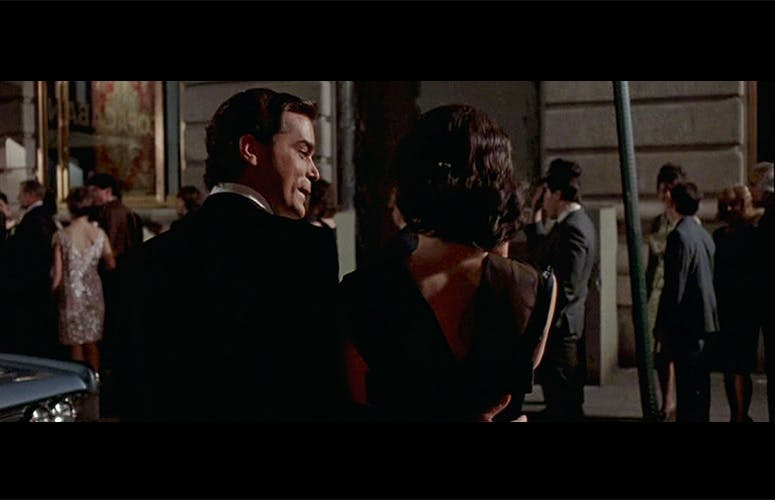%201%20THE%20COPACABANA%20STEADICAM%20SHOT%20(GOODFELLAS,%201990?auto=format&w=1440&q=80)
Shepherding his date through the side door of the hottest club in town, through corridors and the kitchen tipping twenties as he goes, Henry Hill (Ray Liotta) seduces both Karen (Lorraine Bracco) and the audience, as we’re drawn into the gangster life. By the time his table is specially set and the stand-up comic starts, it’s been three minutes of the purest storytelling. Arguably Martin Scorsese’s finest-ever shot, even looking outside of the magazine’s lifetime. DP Michael Ballhaus wasn’t even nominated for an Oscar, but this sequence will be remembered forever. “I like going this way — better than waiting in the line.”